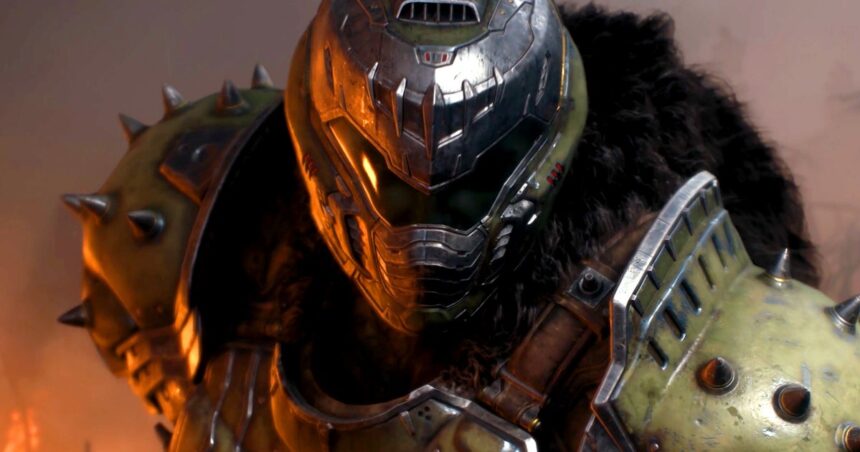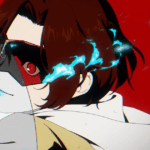Doom: The Dark Ages is a masterfully crafted PC release that manages to run well on low-end hardware, while avoiding the typical issues we associate with game engines possessing high-end rendering features. The launch version manages to achieve a high level of fidelity even without the path tracing feature that’s set to arrive later, and perhaps unsurprisingly the game can be relatively heavy when simply pushed to its maximum settings on low to mid-range hardware. Therefore, optimised settings are worth exploring to strike a better balance between graphical niceties and a responsive HFR experience.
Before we get into our recommended settings for three tiers of PC hardware, it’s worth discussing exactly how the new Doom sets itself apart from its peers in terms of user experience, graphics techniques and performance.
Most critically, Doom: The Dark Ages suffers from zero traversal hitches or shader compilation stutter, two common bugbears of modern PC releases – especially those built on the industry-favourite Unreal Engine. By contrast, the id Tech 8 engine remains blissfully smooth even on mainstream hardware, and I played through the game mostly on a lower-end PC equipped with an AMD Ryzen 5 3600 CPU and RTX 4060 graphics card, opting for a 1440p output resolution using DLSS 4 in quality mode and max settings – including RTGI and RT reflections. This setup remained GPU-limited through the first six hours of play, which typically translates into a smoother experience than CPU-limited scenarios, with frame-rates in the 50s to 90s.
Despite the absence of shader compilation stutter, there’s no lengthy shader precompilation on first boot, and game loads are extremely rapid – clocking in at maximum four seconds for a full chapter load, which is impressive for a triple-A game running on a six-year-old CPU and PCIe 3.0 NVMe SSD. On higher-end kit with a 9800X3D CPU and PCIe 4.0 SSD, load times halved to two seconds.
While the frame-time consistency, graphical fidelity and load times are all worthy of high praise, the game’s menus are just a shade away from top-tier. There are some good features here, including easy keyboard or mouse navigation, settings that change without game restarts, and the menu opening to where you last were, but there’s little in the way of explanation when it comes to each setting.
For example, you might see a setting labelled “directional occlusion”. Does this have a big impact on performance? Does changing it affect CPU usage, GPU usage, VRAM usage? What does the setting even do? None of that is revealed in the menus, with the entire description being “adjusts the directional occlusion quality.” There’s also no preview image nor a transparent menu pane, so you can’t see how your settings changes affect the game without finding a relevant spot, changing a setting, exiting the settings menu and then trying to remember what the area looked like before versus now.
To see this content please enable targeting cookies.
Settings typically have six presets, from low to ultra nightmare, but it can be challenging to spot a visual or frame-rate difference when swapping between them. In fact, it appears that some settings above high have no effect in the current release, so the ultra, nightmare and ultra nightmare presets presumably correspond to the path tracing features that have been deactivated in the launch build.
In terms of upscalers, you have the option between FSR 3.1, XeSS and DLSS 4 with its transformer model engaged – a rarity in 2025. You’re also free to run the game with TAA if you prefer. DLSS 4 offers the best results for Nvidia GPU users, while XeSS offers a small advantage over FSR for players on AMD and Intel GPUs.
Unfortunately, it’s no longer possible to pair an upscaler with dynamic resolution scaling as you could in Doom: Eternal, with the game restricting you to TAA if you enable DRS. There’s also no option to disable variable rate shading (VRS), which is less noticeable than on consoles but still worth disabling on systems with a surfeit of performance.


With that out of the way, let’s talk about optimised settings. Note that this article is purely about the pre-path-tracing version of the game, and things may change with the PT release, and that I’ll be using DLSS as a base point for performance comparisons rather than native rendering with TAA. The goal is to get a similar experience to PS5 in performance mode on low-end gaming PCs, then scale up from there. All of these optimised settings are summarised in a table below, including examples of each tier of GPUs, but I’ll briefly discuss some of the key settings here.
Starting with reflection quality, high, ultra, nightmare and ultra nightmare all look the same and exhibit the same performance figures, as they use half-res RT reflections; medium is one-third-res and low turns RT reflections off as it is on consoles. The low setting makes most sense on low-end GPUs to claw back a touch of performance, while better GPUs can use the medium or high setting. Note that more aggressive upscaling has an effect on how well these sub-native RT reflections integrate into the rest of the image. It’s a similar story with shadow quality, with high offering maximum fidelity at present and the medium and low options degrading quality for a slight uptick in performance; take low for low-end GPUs.
The lights setting controls how many distant lights are culled, and here the small performance advantage isn’t worth extra light pop-in, so I recommend high. The particles setting is one I struggled with, as there’s no obvious difference in quality or density of particles amongst the presets, so I suggest the nightmare setting as it seems to confer a tiny frame-rate edge. Decal quality is even harder to distinguish, so I suggest ultra nightmare in case it has an effect on gameplay visuals. Finally, the water setting doesn’t affect how puddles in early chapters appear, but the foaming simulation in larger bodies of water from chapter six. Choose low for low-end GPUs, and high for higher-end ones here.




Volumetric quality is similarly hard to spot differences in, with slightly less break-up on moving volumetrics at higher settings, so I recommend low. Texture filtering is more vital, due to the way the id Tech engine works, and I recommend the high setting for low-end GPUs for a small performance win.
Geometry quality is also something not worth skimping on, as it controls distant grass in later chapters, so the high setting is worthwhile. Similarly, shading affects the parallax mapping of textures, with low disabling this entirely, so our optimised setting for low-end GPUs is medium. Finally, directional occlusion (SSDO) adds in shadows from unshadowed light sources or in areas indirectly lit by the game’s RTGI, but the differences are slight enough that low is perfectly acceptable.
Considered together, these tweaks can have a nice impact on performance with minimal visual degradation. On our RTX 4060 1440p DLSS quality setup at max settings, we get 51fps in a static scene. With our optimised settings for low-end GPUs engaged, frame-rates climb by 27 percent to 65fps. Meanwhile, medium optimised settings run 14 percent faster than max, and high optimised settings still run eight percent faster. In a scene with more water, the differences are larger – 32 percent faster for low, 19 percent faster for medium and 11 percent faster for high optimised settings. That helps a challenging early game fight run in the 50s rather than the 40s, staying well within VRR range and with similar performance to the PS5.
| Optimised Low | Optimised Medium | Optimised High | |
|---|---|---|---|
| Shadow Quality | Low | High | High |
| Reflections Quality | Low | Medium | High |
| Lights Quality | High | High | High |
| Particles Quality | Nightmare | Nightmare | Nightmare |
| Decal Quality | Ultra Nightmare | Ultra Nightmare | Ultra Nightmare |
| Water Quality | Low | Low | High |
| Volumetrics Quality | Low | Low | Medium |
| Texture Filtering Quality | High | Ultra | Ultra |
| Geometric Quality | High | High | Ultra Nightmare |
| Shading Quality | Medium | Medium | High |
| Directional Occlusion | Low | Low | Medium |
- Optimised Low = RTX 3060, 4060, 2080, 3060 Ti, RX 6700 XT
- Optimised Medium = RTX 3070, 2080 Ti, 4060 Ti, RX 6800
- Optimised High = RTX 4070, 3080, 5060 Ti, RX 6800 XT
One thing we haven’t touched on yet is VRAM. You do get a texture pool setting which has a corresponding indicator of predicted VRAM usage, with the 2048 setting working well on the RTX 4060’s 8GB frame buffer – with a bit of leeway for background tasks and/or features like frame generation. Slightly higher texture pool settings can run fine without any background tasks, but choosing a higher setting – eg 3072 for our RTX 4060 – leads to a sizeable dip in performance, which we measured at around 30 percent.
To be safe, just keep the texture pool size at a level where it’s predicted to use the same or slightly less than your graphics card’s available VRAM. I didn’t see any instances of textures not loading in with lower settings, so it’s likely that this controls the cache rather than limiting final texture quality.
To sum up, Doom: The Dark Ages is a brilliantly optimised PC release. Some things could change in the settings menu, and it will be fascinating to see how the path tracing works when it arrives to scale fidelity well beyond what’s possible on console, but the game is already in a great place. Most importantly, the new Doom dodges the frame-time stability woes endemic to many recent PC releases and performs well even on low-end kit, which is fantastic to see. id has done it again.





